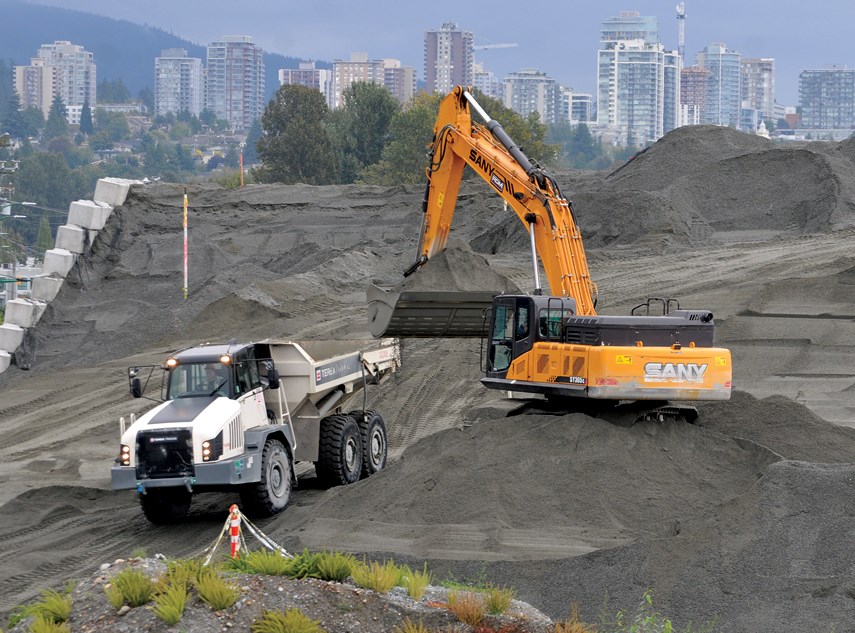Costs for the new North Shore sewage treatment plant – currently under construction on McKeen Avenue – plus a massive new two-kilometre pipe and pumping station, have ballooned to over $1 billion.
Metro Vancouver released updated costs for the North Shore Waste Water Treatment plant project on Friday, that puts revised estimates at $1.058 billion.
That’s over $100 million more than the most recent previous cost estimate that had pegged the project cost at $882 million.
The massive project is also several years behind schedule.
Originally, the sewage plant was supposed to be operational by December 2020 in order to comply with federal requirements to provide secondary treatment. Now, however, the project isn’t expected to be finished until 2024.
After public pressure from environmental advocates, the design of the plant was changed in 2019 to enable tertiary sewage treatment, adding $29 million to the project budget, then estimated at $778 million.
The system will use a series of disc filters – essentially very fine screens – to significantly reduce the organics being discharged into the environment.
The system that will be built on the North Shore is the same as the $775-million tertiary system recently completed in Victoria's Capital Regional District after four years of construction.
The most recent cost increases are due to several factors, said Metro Vancouver Commissioner Jerry Dobrovolny. Those have included geotechnical complications with soils on the site, said Dobrovolny.
“It’s a very challenging site. They’ve had real difficulties with the soils,” he said.
In April 2019 the District of North Vancouver slapped a stop-work order on the site after the company building the plant, Acciona, terminated one of its leading geotechnical engineering contractors, Tetra Tech. That resulted in Tetra Tech filing a $20-million lawsuit.
Soil conditions on the site were a part of that dispute.
COVID has added another layer of challenges with slowdowns in supplies and requirements for additional on-site protocols.
Construction on the project was initially supposed to start in 2014, but didn’t get underway until 2018. “That has a major impact on costs as well,” said Dobrovolny.
The cost also includes preliminary design for decommissioning the site of the existing sewage treatment plant and turning that over to the Squamish Nation.
Dobrovolny said despite the increases, Metro Vancouver is working to make sure ballooning project costs won’t significantly impact local taxpayers. “We’re having to reprioritize and make adjustments in other areas,” he said.
Dobrovolny said work on the treatment plant is about 15 to 20 per cent complete.
The debate over what to replace the aging current Lions Gate primary treatment plant with goes back many years.
For decades, the approximately 31-billion litres of waste being flushed into Burrard Inlet has been treated to only a very basic "primary" level - which essentially involves taking out the biggest "solids" through mechanical processes.
In 2012, new federal government regulations spelled out secondary treatment – which adds bacteriological breakdown of waste – as the minimum standard required for sewage treatment and set a deadline of December 2020 by which older plants had to be upgraded.
Dobrovolny said Metro Vancouver remains in regular contact with federal regulators with updates on the sewage plant project.




